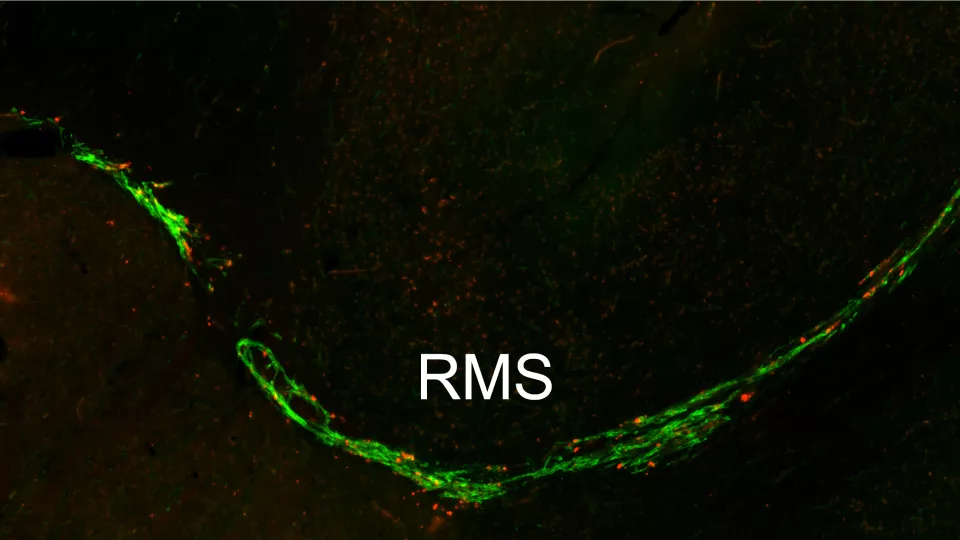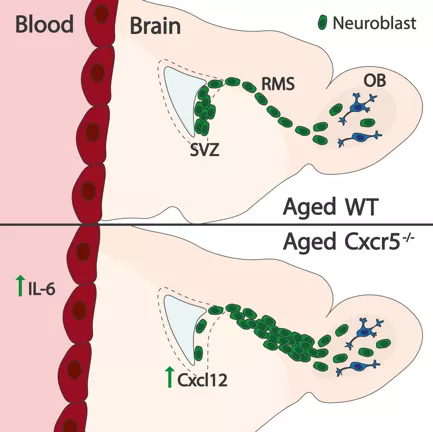“One of the focuses of our research is on what goes wrong in the brain during aging” explains Henrik Ahlenius, principle investigator from the Stem Cells, Aging and Neurodegeneration group. “In this study we are trying to understand the role of inflammation in the neurogenic decline associated with aging, a process that is poorly understood”.
In the article published in the journal Stem Cells, the group has identified the Cxcl13/Cxcr5 signalling pathway as a novel regulator of neurogenesis, specific to the aged brain.
In a collaborative paper published in 2015, Cxcl13 was identified as one of the top released factors during inflammation in the brain. “The groups interest in neurogenic decline during aging, the important regulatory function of inflammation on neurogenesis and the increased inflammation associated with brain aging was really the starting point for this study” explains Henrik.
Now the group have been using a mouse model lacking the Cxcr5 receptor, disrupting Cxcl13/Cxcr5 signalling, to understand the importance of this pathway in neurogenesis.
Under normal conditions, neuroblasts – primitive nerve cells – develop from neural stem cells in a region of the brain known as the subventricular zone. They then migrate to the olfactory bulb, where they differentiate into mature neurons involved in processes such as olfaction, the sense of smell.
Upon disruption of Cxcl13/Cxcr5 signalling the group observed a dramatic increase in the proliferation of neuroblasts and in their migration away from the subventricular zone to the olfactory bulb, but intriguingly only in aged brains. These proliferating neuroblasts were unable to differentiate into fully mature neurons and integrate properly.
Surprisingly, the expression of Cxcl13 or Cxcr5 was undetectable in neuroblasts and in cells of the subventricular zone, strongly suggesting that the observed effect is indirect.
“What is fascinating is that what we observe is specific to the neuroblasts despite the lack of Cxcr5 expression” reflects Jonas Fritze, PhD student and lead author on the paper.
The group discovered that disruption of Cxcl13/Cxcr5 signalling resulted in a significant increase in the systemic levels of the inflammatory cytokine IL-6, known to increase neural stem cell proliferation. They also observed an increase in Cxcl12 expression levels, a signalling molecule known to promote cell migration, in the brain.
“We believe that the increase in neuroblast proliferation and migration in our model is mediated by different levels of circulating IL-6, and also by altered levels of Cxcl12 in the brain” explains Jonas.
This study raises the possibility of a new mechanism by which the interplay between systemic factors and local alterations in the brain regulate neurogenesis with age.
“Here we see that deleting a cytokine receptor, even if the receptor is not expressed on neural stem cells, can have profound impact on neurogenesis” concludes Henrik, “This research field is becoming increasingly important as the average life expectancy continues to rise world-wide, but also when understanding the indirect effects of the various anti-inflammatory regimes currently implemented in the clinic”.



